Scientist of the Day - William Hyde Wollaston
William Hyde Wollaston, an English chemist and natural philosopher, was born Aug. 6, 1776. Wollaston trained as a physician and practiced as one for a few years, but he apparently did not much like medical practice, preferring to tinker with chemical compounds in his laboratory. Around 1800, he found a way to earn a living from chemistry, when he and a business partner, Smithson Tennant, acquired a large quantity of nearly pure platinum ore that had been smuggled out of South America, and Wollaston learned how to make malleable platinum from powdered purified ore. The metal was similar in its properties to gold but cheaper, and so was much in demand. Although he had plenty of family money, the sale of platinum metal would provide him (and the shorter-lived Tennant) with a steady income until Wollaston’s death in 1828. He did not reveal his complicated process for making malleable platinum until 1826.
It was while working with platinum ore that he and Tennant discovered four more metals that form most of what is called the platinum group. These sit close together in the middle of the modern periodic table (which did not exist when Wollaston was working) and have similar chemical properties. Wollaston discovered palladium in 1802 and rhodium in 1803, both present in residues from platinum chemical solutions (Tennant discovered iridium and osmium in the platinum solutions themselves). Wollaston named palladium after the newly discovered asteroid, Pallas, and rhodium after the rosy color of one of its precipitates. For some reason, Wollaston announced the discovery of palladium anonymously, although rhodium was more properly described in a paper in the Philosophical Transactions of the Royal Society in 1804 (fourth image, below).
What impressed his contemporaries about his methods of discovery was that Wollaston worked with very small quantities, some 50 grams of platinum ore. Until Wollaston, the custom among analytic chemists was to work with large amounts of material – tens of kilograms – when searching for new elements. They found it hard to believe that Wollaston could do such precise analysis and identification of properties on such a small scale. One visitor to Wollaston's home recalled that when he expressed a wish to see Wollaston's lab, Wollaston replied that he would bring the lab to his guest, and proceeded to return with a tray on which there was a spirit lamp, a blowpipe, and a few stoppered jars of reagents, and then did all manner of delicate experiments right there in the parlor.
Wollaston also made contributions to other sciences, such as electricity. Alessandro Volta announced his Voltaic cell (the first battery) in the spring of 1800, and since it is easy to make such a cell with a few metal discs and some wet blotting paper, soon all of scientific London was investigating its properties. By 1801, Wollaston was the first to demonstrate that Voltaic electricity is the same as that produced by an electrostatic generator and stored in a Leyden jar – something not at all obvious in 1801. He also, along with Humphry Davy, investigated electrolysis, the breaking down of chemical solutions by an electric current. He even fabricated a tiny electrolytic cell, using platinum wires for electrodes, that he could carry around in his coat pocket. In addition to his work in electricity, Wollaston did work in optics, discovering the Fraunhofer lines in the solar spectrum in 1802, well before Fraunhofer; he also invented a camera lucida, and an instrument for Arctic explorers to measure magnetic dip.
Wollaston was considered by his contemporaries to be a truly great scientist, the equal of Davy and Thomas Young, and it is curious that he is little known today, outside of the professional circle of historians of chemistry. It did not help that he wrote no books at all, only publishing short papers occasionally in the Philosophical Transactions or in one of the various chemical journals that were popular in the early 19th century. It also did not help that all of his laboratory notebooks – which were meticulous in their detail – disappeared for over a century, only reemerging in the 1960s. He only got his first full-length biography in 2015 - an excellent book by Melvyn Usselman, making full use of the notebooks, called Pure Intelligence: The Life of William Hyde Wollaston.
There are quite a few portraits of Wollaston in the National Portrait Gallery, and a fine marble bust in the Royal Institution. But there are few other tangible relics of Wollaston that can be sought today by the scientific tourist. There was a plaque on his London house, but the house was destroyed, and the plaque has disappeared into an archive. There is a plaque in Bury St Edmunds, where he had his short-lived medical practice (fifth image). Perhaps the best memorial is the Wollaston Medal, which is given annually by the Geological Society of London (sixth image, just above). However, it was, in a way, a self-generated memorial, as Wollaston gave £1000 to the Society before his death, and they coined the die for the medal using the income from that bequest. However, it has become the most prestigious honor that the Society bestows. And one of the nicest things about it is that is made of palladium.
Dr. William B. Ashworth, Jr., Consultant for the History of Science, Linda Hall Library and Associate Professor emeritus, Department of History, University of Missouri-Kansas City. Comments or corrections are welcome; please direct to ashworthw@umkc.edu.

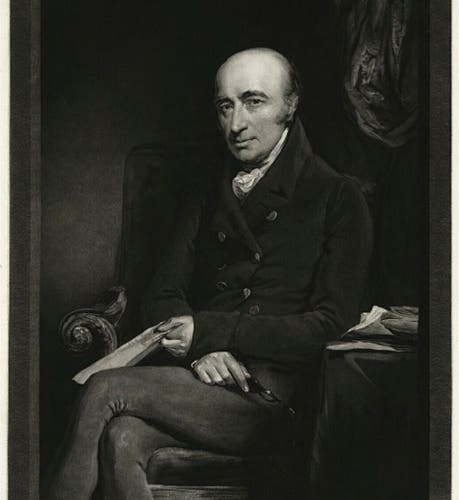
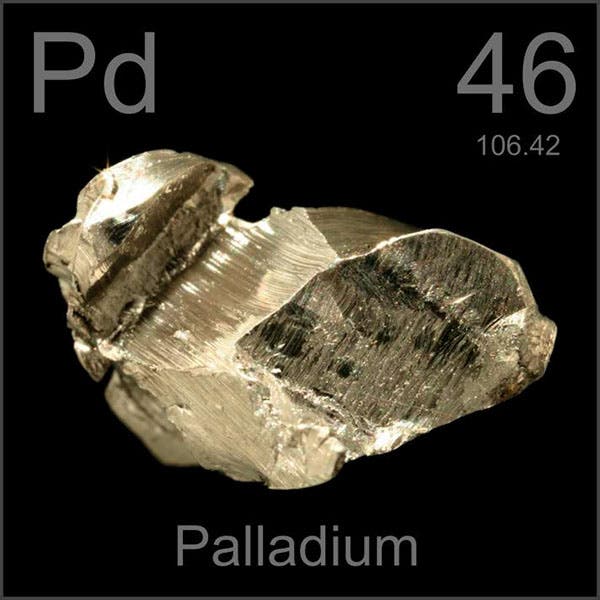
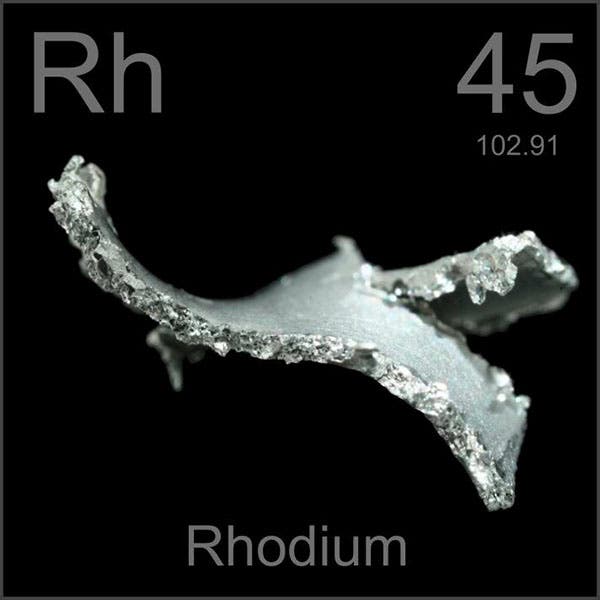
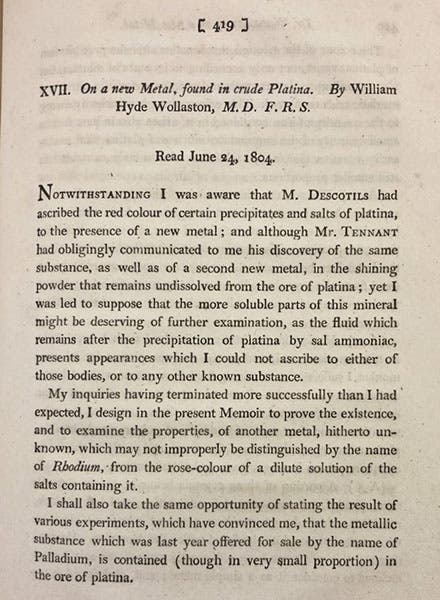
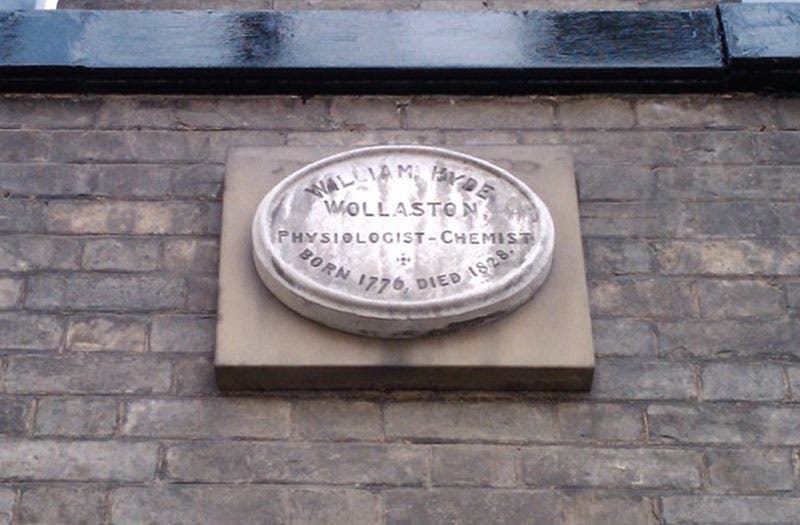
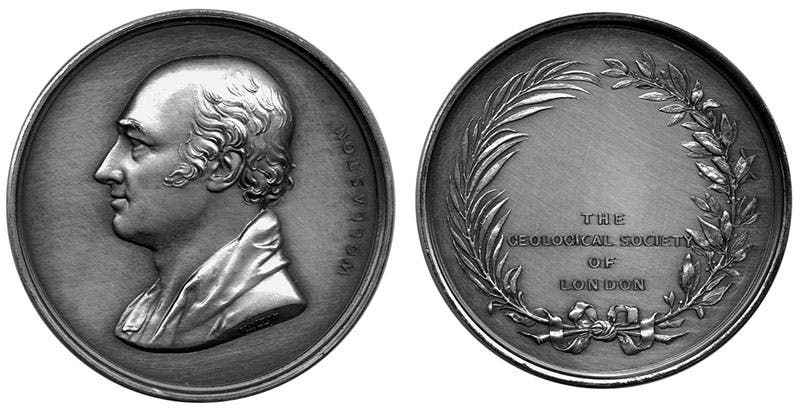
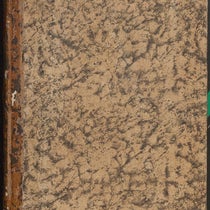



![Columbine, hand-colored woodcut, [Gart der Gesundheit], printed by Peter Schoeffer, Mainz, chap. 162, 1485 (Linda Hall Library)](https://assets-us-01.kc-usercontent.com:443/9dd25524-761a-000d-d79f-86a5086d4774/3829b99e-a030-4a36-8bdd-27295454c30c/gart1.jpg?w=210&h=210&auto=format&fit=crop)